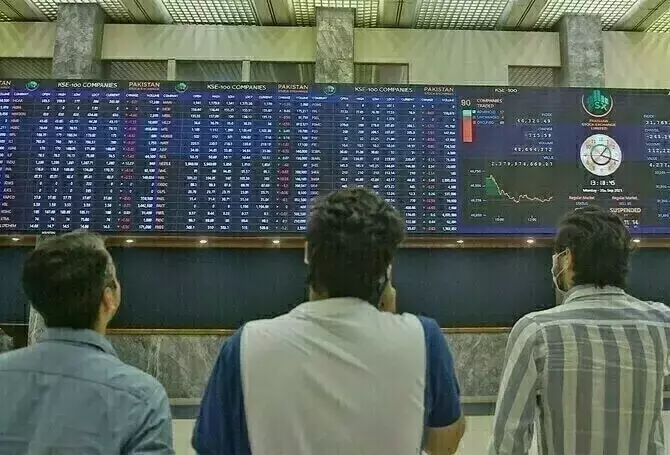Navigating the Turbulent Tides: A Comprehensive Analysis of Key Market Indices
In the ever-evolving landscape of global financial markets, investors and analysts alike closely monitor the performance of key market indices to gauge the pulse of the economy. This article delves into the recent fluctuations observed in several prominent indices, providing a comprehensive analysis to help readers navigate the turbulent tides of the market.Uncovering the Dynamics: A Closer Look at Market Movements
BR100: Weathering the Storm
The BR100 index, a barometer of the Pakistani stock market, has experienced a notable decrease of 20.4 points, or 0.24%, in the recent trading session. This decline reflects the broader market sentiment, as investors navigate the challenges posed by economic uncertainties and geopolitical tensions. Despite the downward trend, industry experts suggest that the BR100 remains a resilient indicator, capable of weathering the storm and providing valuable insights into the country's financial landscape.The BR100's performance is often viewed as a reflection of the overall health of the Pakistani economy, and its fluctuations can have far-reaching implications for businesses, investors, and policymakers alike. By closely monitoring the index's movements, stakeholders can gain a deeper understanding of the market's dynamics, enabling them to make informed decisions and adapt their strategies accordingly.BR30: Navigating the Choppy Waters
The BR30 index, which tracks the performance of the top 30 companies listed on the Pakistani stock exchange, has also seen a decrease of 151.8 points, or 0.59%. This dip in the BR30 suggests that the broader market sentiment has been influenced by a range of factors, including global economic conditions, domestic policy changes, and industry-specific challenges.As investors and analysts scrutinize the BR30's performance, they gain valuable insights into the performance of the country's leading corporations. This information can be instrumental in identifying emerging trends, assessing the overall health of specific sectors, and making informed investment decisions.KSE100: Weathering the Volatility
The KSE100 index, a widely recognized benchmark for the Pakistani stock market, has experienced a decrease of 365.8 points, or 0.45%. This fluctuation in the KSE100 reflects the broader market sentiment, as investors navigate the complexities of the global economic landscape and respond to domestic policy changes.The KSE100's performance is closely watched by a diverse range of stakeholders, including individual investors, institutional investors, and policymakers. By analyzing the index's movements, these individuals and organizations can gain a deeper understanding of the market's dynamics, identify potential opportunities, and develop strategies to mitigate risks.KSE30: Navigating the Shifting Tides
The KSE30 index, which tracks the performance of the top 30 companies listed on the Karachi Stock Exchange, has experienced a decrease of 64.8 points, or 0.25%. This decline in the KSE30 suggests that the market is navigating a period of volatility, with investors responding to a range of economic and political factors.The KSE30's performance is often viewed as a barometer of the overall health of the Pakistani corporate sector, providing insights into the performance of the country's leading companies. By closely monitoring the index's movements, investors and analysts can identify emerging trends, assess the relative strength of different industries, and make informed decisions about their investment strategies.

